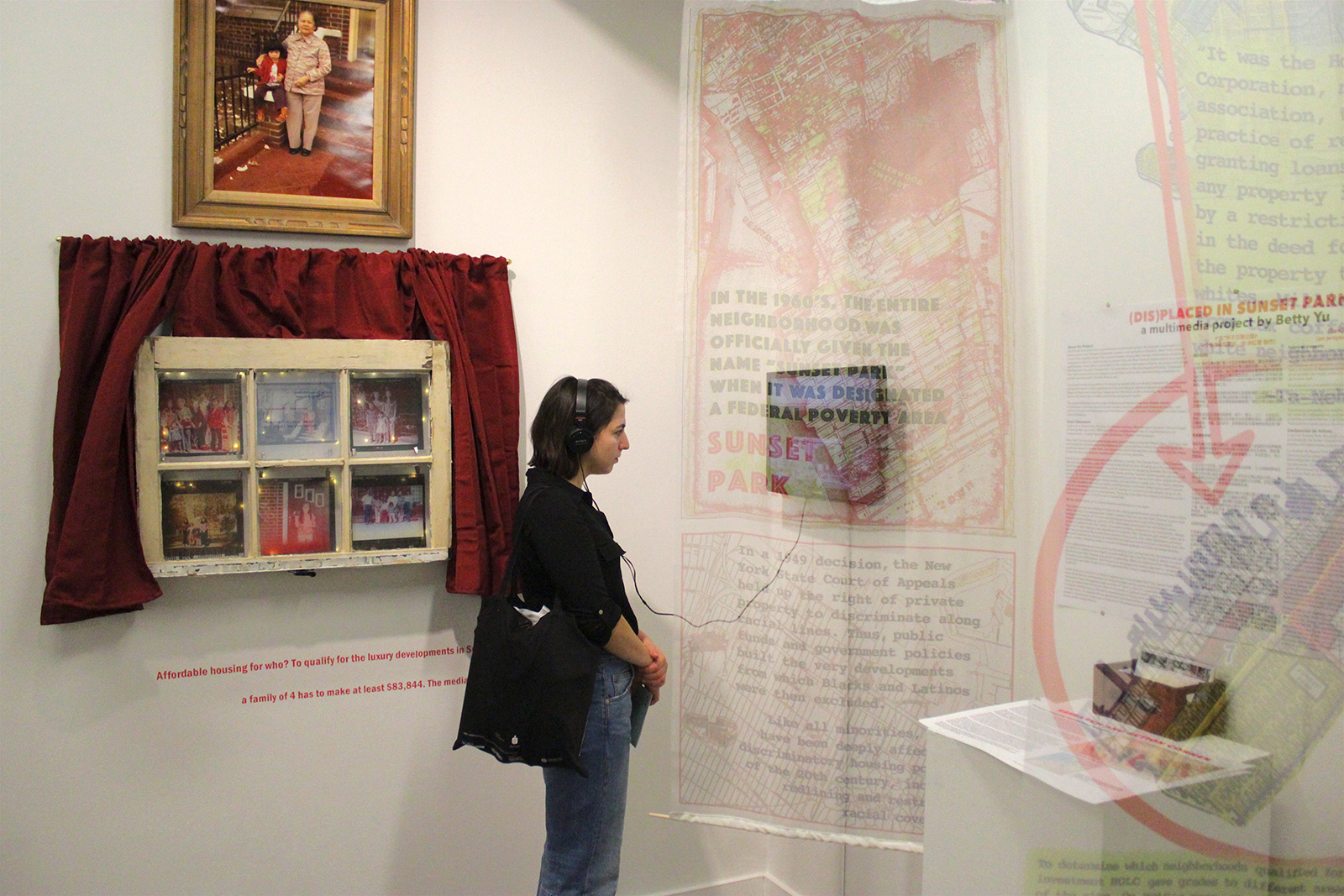The opening of a group exhibition where my (Dis)Placed in Sunset Park work is Wednesday, Feb 6th from 7-9pm -part of the BRIC Biennial in Brooklyn, NYC (at the BRIC House on 647 Fulton Street, enter on Rockwell Place) in the Project Room on the ground level.
The show will be up until April 7th.
Betty will also be presenting on an artist talk/ panel discussion "Art and Community Activism" as a part of the exhibition on Fri, March 8th at 7pm at BRIC.
CLICK HERE for info about the" “Virtual and Real Estate” show at BRIC’s Biennial (February 6-April 7)
CLICK HERE for more info about the March 8th “Art and Community Activism” Panel
More about her work on view, (Dis)Placed in Sunset Park:
(Dis)Placed in Sunset Park is an interactive multimedia exhibition that features short videos of Latinx and Chinese (im)migrants, workers and residents in Brooklyn, New York’s diverse Sunset Park neighborhood. The common theme among their stories is the shared narrative of migration to the U.S., their journey to Sunset Park and their fears of displacement as a result of gentrification. Each story is grounded in the subject’s own sense of home, sanctuary and refuge that they have found in Sunset Park. The title refers to the way people are being “displaced in” their own community as it changes around them; and to the some are being crowded into smaller quarters within Sunset Park as well.
My family was part of the early wave of Chinese-American families to move into Sunset Park back in the late 1970’s. Using myself as an entry point into the exhibition and project, I document the impact of gentrification on the cultural fabric, community life and changing racial demographics of Sunset Park through my own story and the stories of others. (Dis)Placed in Sunset Park also examines and interrogates the shifting borders of Sunset Park as it relates to the changing boundaries for plans created by real estate speculators and developers. The mapping aspect of this project highlights contrasting definitions of legitimate space and belonging.
More info about the Virtual and Real Estate group exhibition at the BRIC Biennial (on view from Feb 6 - April 7):
In conjunction with the BRIC Biennial: Volume III, South Brooklyn Edition, the Virtual and Real Estate group exhibition features work by artists Pastiche Lumumba, Daniel Bejar, and Betty Yu, that expresses the conundrums that arise from living in an age where the simulated is increasingly confused with the real. Although "estate" has previously been defined as fixed physical properties, the exhibition troubles our notions of property, ownership, circulation, space, and most fundamentally, what it means to be "real." The Internet provides marginalized communities a virtual space for subversion and play, meanwhile distracting from the physical realities of gentrification and land rezoning. From Lumumba's embalmed memes to Bejar's performative drawing of invisible geography, to Yu's archive of stories by communities affected by gentrification, these works challenges the absurdity of place and placelessness to bear on the chronological depth of lived experience. Virtual Real Estate was curated by Connie Kang and Danielle Wu of An/Other, a group of artists, writers, and curators advocating for Asians and Asian-Americans in the arts.






